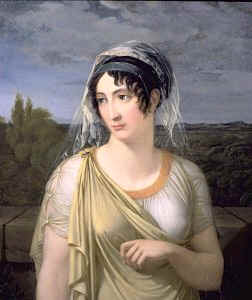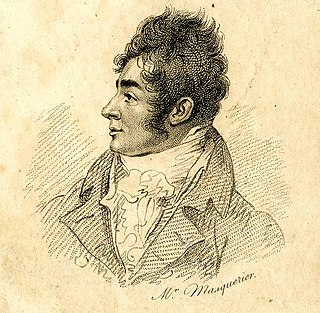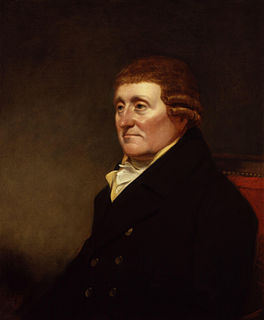 W
WSamuel Atkins, was a British marine painter.
 W
WHeneage Finch, 4th Earl of Aylesford, PC, FRS, FSA, styled Lord Guernsey between 1757 and 1777, was a British politician who sat in the House of Commons from 1772 to 1777 when he succeeded to a peerage. He was also a landscape artist.
 W
WIsabella Beetham was an 18th-century British silhouette artist. She began her career by cutting the silhouette images. After studying painting with successful miniature portraitist John Smart, Beetham painted silhouettes to be framed or miniatures were made for jewelry. From 1785 to 1809, she had a business on 27 Fleet Street in London, where she produced silhouettes of men and women. She is considered one of the great 18th century silhouette artists, along with John Miers and Auguste Edouart.
 W
WMargaret Bingham, Countess of Lucan was an English painter, copyist and poet, whose art was much admired by Horace Walpole. Her pseudonymous Verses on the Present State of Ireland made a strong protest against Britain's treatment of the country.
 W
WDavid Brown was a British landscape and genre painter.
 W
WJohn Westbrooke Chandler was a British painter and poet.
 W
WGeorge Cuitt the Elder (1743–1818) was a British painter.
 W
WAlexander Day was a miniature painter and art dealer. Born in Britain, he worked chiefly in Rome.
 W
WSamuel Drummond was a British painter, especially prolific in portrait and marine genre painting. His works are on display in the National Portrait Gallery, the National Maritime Museum and the Walker Art Gallery.
 W
WRobert Fagan was a painter, diplomat and archaeologist. Born in London, he spent most of his career in Rome and Sicily.
 W
WHenry Fuseli was a Swiss painter, draughtsman and writer on art who spent much of his life in Britain. Many of his works, such as The Nightmare, deal with supernatural subject-matter. He painted works for John Boydell's Shakespeare Gallery, and created his own "Milton Gallery". He held the posts of Professor of Painting and Keeper at the Royal Academy. His style had a considerable influence on many younger British artists, including William Blake.
 W
WMary Grace was a self-taught professional portrait painter and copyist in the 18th century.
 W
WCharles Grignion the Younger (1754–1804) was a British history and portrait painter and engraver.
 W
WGavin Hamilton was a Scots neoclassical history painter, who is more widely remembered for his hunts for antiquities in the neighbourhood of Rome. These roles in combination made him an arbiter of neoclassical taste.
 W
WCharles Howard Hodges, was a British painter active in the Netherlands during the French occupation of the 18th and early 19th century.
 W
WRobert Home (1752–1834) was a British oil portrait painter who travelled to the Indian subcontinent in 1791. During his travels he also painted historic scenes and landscapes.
 W
WMaria Anna Angelika Kauffmann, usually known in English as Angelica Kauffman, was a Swiss Neoclassical painter who had a successful career in London and Rome. Remembered primarily as a history painter, Kauffmann was a skilled portraitist, landscape and decoration painter. She was, along with Mary Moser, one of the two female founding members of the Royal Academy in London in 1768.
 W
WMarcellus Laroon the Younger was an English painter and draughtsman of French origin. He specialized in social genre scenes, and he frequented the world of actors and painters around Covent Garden in London that he painted. George Vertue, a contemporary who knew him well, said he painted for pleasure rather than profit.
 W
WElizabeth Liddell (1770–1831) was an amateur British artist specialising in pastel portraits. She was wife of Robert Hodshon Cay, mother of John Cay, mother-in-law of John Clerk-Maxwell of Middlebie and grandmother of James Clerk Maxwell.
 W
WMauritius Lowe (1746–1793) was a British painter and engraver.
 W
WJoseph Marshall was an 18th-century British marine painter. He is best known as the painter of a series of paintings of ship models, commissioned by George III of Great Britain in 1773 but only completed in 1779. He worked from the ships' plans rather than models to produce bow and stern images of ten ships, representing every class in the Royal Navy at that time. These ten ships were HMS Ambuscade, Portland, Sphinx, Kingfisher, Barfleur, Royal George, Enterprise, Experiment, Royal Oak, and Intrepid. He had previously produced two similar paintings of Alert in 1755.
 W
WJohn James Masquerier was a British painter of French Hugenot descent. His work was mainly portrait painting, including of notables such as Lady Hamilton.
 W
WJohn Hamilton Mortimer was a British figure and landscape painter and printmaker, known for romantic paintings set in Italy, works depicting conversations, and works drawn in the 1770s portraying war scenes, similar to those of Salvator Rosa.
 W
WArcher James Oliver was a British painter, principally active as a portraitist.
 W
WWilliam Parsons was a British actor and painter in the mid to late eighteenth century. He appeared mostly at Drury Lane and Haymarket in minor to supporting roles, but also had prominent roles in plays like Volpone and Hamlet.
 W
WSir Robert Ker Porter, KCH (1777–1842) was a Scottish artist, author, diplomat and traveller. Known today for his accounts of his travels in Russia, Spain, and Persia, he was one of the earliest panorama painters in Britain, was appointed historical painter to Tsar Alexander I of Russia and served as British consul in Venezuela.
 W
WGeorge Keith Ralph was a British portrait-painter.
 W
WJohn Ramage was an Irish American artist, goldsmith, patroller, and second lieutenant. He was best known for painting portrait miniatures, and being the first artist to paint George Washington while serving as the President of the United States.
 W
WFrancis Swaine (1725–1782) was an English marine painter.
 W
WRichard Wilson was an influential Welsh landscape painter, who worked in Britain and Italy. With George Lambert he is recognised as a pioneer in British art of landscape for its own sake and was described in the Welsh Academy Encyclopedia of Wales as the "most distinguished painter Wales has ever produced and the first to appreciate the aesthetic possibilities of his country". In December 1768 Wilson became one of the founder-members of the Royal Academy. A catalogue raisonné of the artist's work compiled by Paul Spencer-Longhurst is published by the Paul Mellon Centre for Studies in British Art.